Digital Foundry vs. E3: Nintendo
What are the Wii U's specs? Digital Foundry examines Nintendo's new console.
There is actually a whole lot more to the Japanese garden demo than what was shown in the media briefing. Different weather effects kick in - for example, rain begins to descend, interacting very nicely with the surface of the water, with a huge amount of tiny splashes impacting on the "skin" of the fluid.
Other sections of the demo unseen in the media briefing were also witnessed: for example, a close-up of the bird on a snowy ledge, with the snow itself deforming beneath it - a really nice effect, but not particularly taxing from a technical perspective (readers may recall something similar in Dead or Alive on the Xbox).
In addition to this, there's a night-time flying section where bad weather kicks in, with a lot of fast-moving rain particles. At this point, the frame-rate really tanks. Curiously, the performance is fine in the snow scene that you might assume is using similar tech, so quite why the frame-rate drops as much as it does at this point is unclear. Another additional section shows the whole scene bathed in an intense orange bloom effect, without any tone-mapping. Artistically it seems to fit the scene well enough but the lighting definitely isn't using high dynamic range rendering.
Overall frame-rate in the elements of the demo seen in the conference is solid at 30 frames per second (again confirmed by looking at an off-air TV recording), but in the latter, unbroadcast sections we do see a lot of variance in performance. The fact that the player can adjust the camera view also adds to the fluctuating frame-rate.
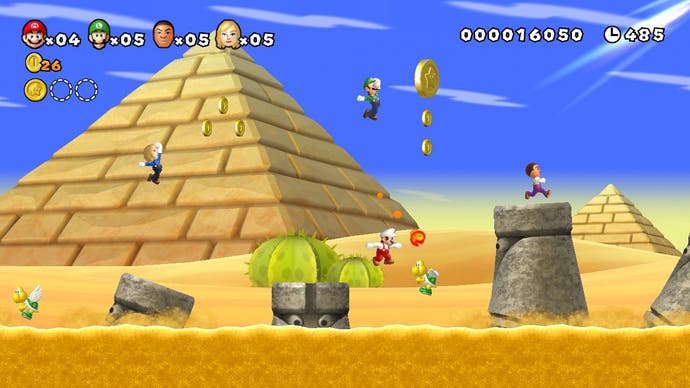
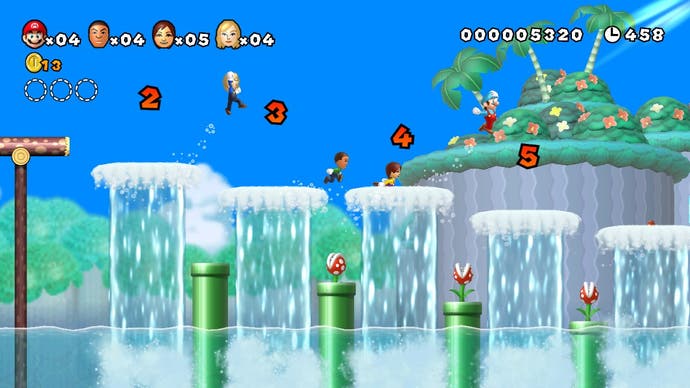
It's a shame that the demo hasn't been seen in its entirety, and not even a decent HD video of the section shown in the media briefing has been released by Nintendo. While the demo is impressive, with some wonderfully realistic animation on the bird itself, many of its shortcomings have been hidden by the low quality video streams we've had to look over.
Texture shimmering is a significant problem in certain sections of this demo. Early in the sequence, before the scene where the bird lands and the cherry blossom... blossoms, there's a lot of shimmering in the foliage, which looks to be an alpha-testing issue. We see a similar artifact later on in the demo too, on the ground and on a passing tree just before arriving at the pond.
Quite why this is happening is unclear. Maybe the coders implemented negative LOD, using far higher texture detail than would comfortably fit into the available resolution. Maybe it's just poor texture filtering - which we really wouldn't expect from a modern graphics core, but could be an option. We're not entirely clear on resolution and anti-aliasing here, but it's definitely not a 1080p demo, so our best guess is that like the Zelda HD experience, it's also running at 720p.
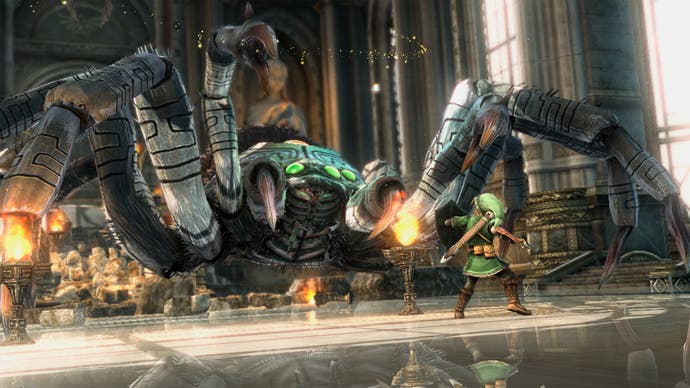
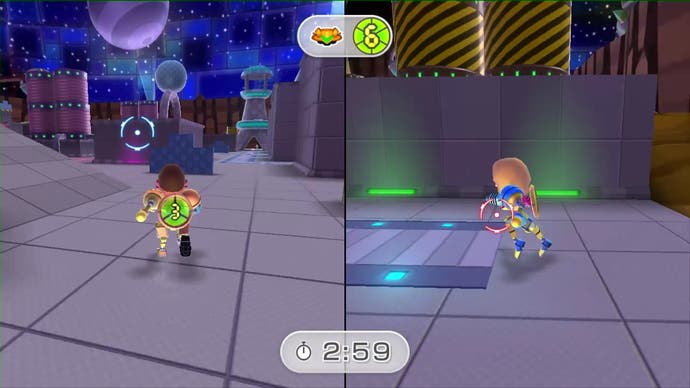
Video and screenshot assets that have been released to date all show the same 720p resolution with no anti-aliasing. Bearing in mind the limited nature of the demos, the lack of any kind of edge-smoothing is a bit of a puzzle, especially bearing in mind the simplicity of the software. Multi-sampling anti-aliasing is hardware based, Nintendo should be able to just turn it on. Quite why they haven't is a bit of a mystery, especially bearing in mind how many of their titles emphasise good, clean 3D visuals that would benefit significantly by being jaggie-free.
In terms of other stuff we gleaned from checking out the E3 showing, there were displays showing both the main feed running on an HDTV, and then a secondary monitor depicting the content being beamed to the controller. What is interesting here is that the demo included a simulation of gameplay switching over from one display to the other. In this case, the game appeared to be switching resolution, rather than downscaling from HD as PS3 and 360 titles tend to when the consoles are set to 576p or 480p. This opens up the very real possibility that games with performance issues when running on an HDTV could actually run more smoothly when played on the tablet.
Quite what the reduction in resolution actually is when swapping between HDTV and pad has yet to be confirmed. As you can see from the Nintendo spec sheet, the company gives away very, very little about the technical make-up of the machine.

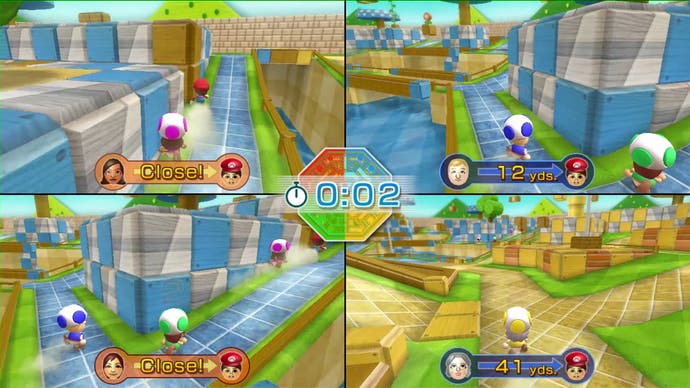
However, some believe that the panel offers an 854x480 resolution: the old EDTV standard. While this can't be ruled out, such a display would be a very rare beast indeed, and it is more likely that Nintendo is using an off-the-shelf 6.2-inch touchscreen panel as used in in-car entertainment and navigation systems. The vast majority of these use an 800x480 resolution with slightly rectangular pixels to give a 16:9 aspect ratio.
Many of the other elements of the machine's make-up remain unknown. Nintendo's approach is to rule out discussion on the internals and talk about the controller-driven concepts, which to be fair is the major point of differentiation, the core element that separates Wii U from the competition at the present time. The firm's stance is unambiguous: the concepts are far more important than graphics comparisons with existing consoles.
The flipside to the concept-first argument is that with next-gen hardware from Microsoft and Sony drawing closer, the technical elements of the Wii U are very important to gamers looking to outlay a sizeable amount of cash on a new console. Bearing in mind that the quality of its visuals are akin to a machine that is now approaching its sixth birthday, how long will it "last" until a true generational leap comes along? This is precisely the challenge facing 3DS right now as Sony prepares to launch PlayStation Vita.








